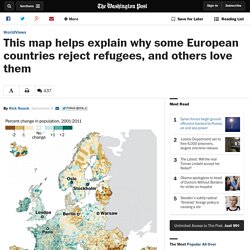

Pupil numbers predicted to fall 5.2% over the next decade. The number of pupils in state-funded schools is expected to drop by 5.2 per cent over the next decade, new statistics show.

Pupil projection data published by the Department for Education today states the overall population of state schools is expected to decrease by 408,000 to about 7.3 million by 2030. The figures show that the next two years will see an increase in pupils overall, but this will begin to drop in the following years. The secondary school population is due to continue to rise until 2024, driven by a population bulge caused by an increase in the birth rate in the early 2000s. However, the number of pupils in secondary schools will then begin to drop off from 2025, because of a lower birth rate seen in 2013 and beyond. The population of primary and nursery schools had been rising since 2009 as a result of the early 2000s baby boom, but has now plateaued and is projected to fall every year until 2030.
Fertility rate: 'Jaw-dropping' global crash in children being born. Well done, Prince Harry, for talking about population – but ditch the private jets. Oh Harry, it’s all a bit complicated isn’t it?

From extracts released of a Vogue interview you have done with the great primatologist Jane Goodall, you imply that you plan to have just one more child because of your concerns about the environment. Well, compared with your parents and grandparents, that’s a good start. But the planet is not responding well to your jet-setting lifestyle, and two more little Sussexes adopting Dad and Mum’s ways won’t help.
To make any difference to planet Earth, you and your family really must stop taking those private jets to Jamaica, the luxury safaris in Botswana, the weddings in Montego Bay, the impromptu winter getaways in Tromsø, the “babymoons” in Australia and New York, the downtime on Mediterranean islands and the quick flights to Fiji. Not to mention the ecological cost of living in all those grand houses and palaces or going on the royal tours. This map helps explain why some European countries reject refugees, and others love them. As hundreds of Germans held up "Welcome Refugees" signs last weekend, much of Europe watched in bewilderment.

“Germany is the only country that is welcoming us,” said Alalie, a 37-year-old from Damascus, Syria, and one of the thousands of refugees who arrived at the main train station in Munich. Nearly all of the refugees had come from Hungary — a country with restrictive immigration policies and where many said the authorities had treated them inhumanely. But why are there such deep divides within Europe? Why do some countries welcome refugees, while others do everything they can to keep them out? [For six migrants, Europe offers ‘last hope’] Migrants protest being stuck in Bicske, Hungary. The reasons are many, but one stands out: demographics. A closer look at the following maps, which compare demographic trends across Europe between 2001 and 2011, helps explain some of the reasons Europe is so divided on how to deal with refugees.
Already today, Germany lacks young, skilled workers. How the world's population is changing in 7 maps and charts. In the interactive map at the top of this page, readers can click to find out the annual rate of population change in the last five years as well as the female and male life expectancy of those born today in each country.

The data comes from the latest State of World Population report from the UN. But as we consider the growing population, what other changes will there be to the world's population? Here we try to explain. The population in eastern Europe is declining In eastern Europe, a falling birth rate and the increase in people moving abroad for better opportunities means that the population is shrinking. For example, CityMetric points out that after Latvia joined the EU in 2004, "at least 10 per cent of the country's population left".
In the UK, the equivalent would be nearly six million people leaving in a short period of time. “If things keep going the same way there will hardly be any Latvians left at the end of the century. " Source: UN.